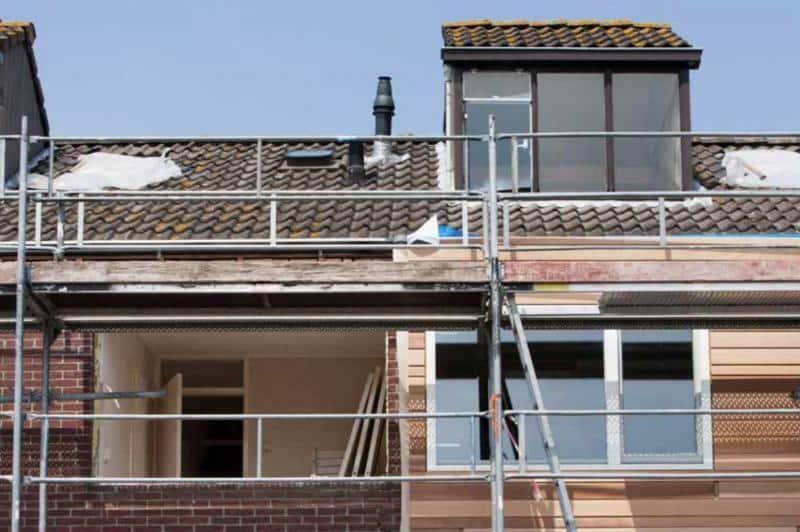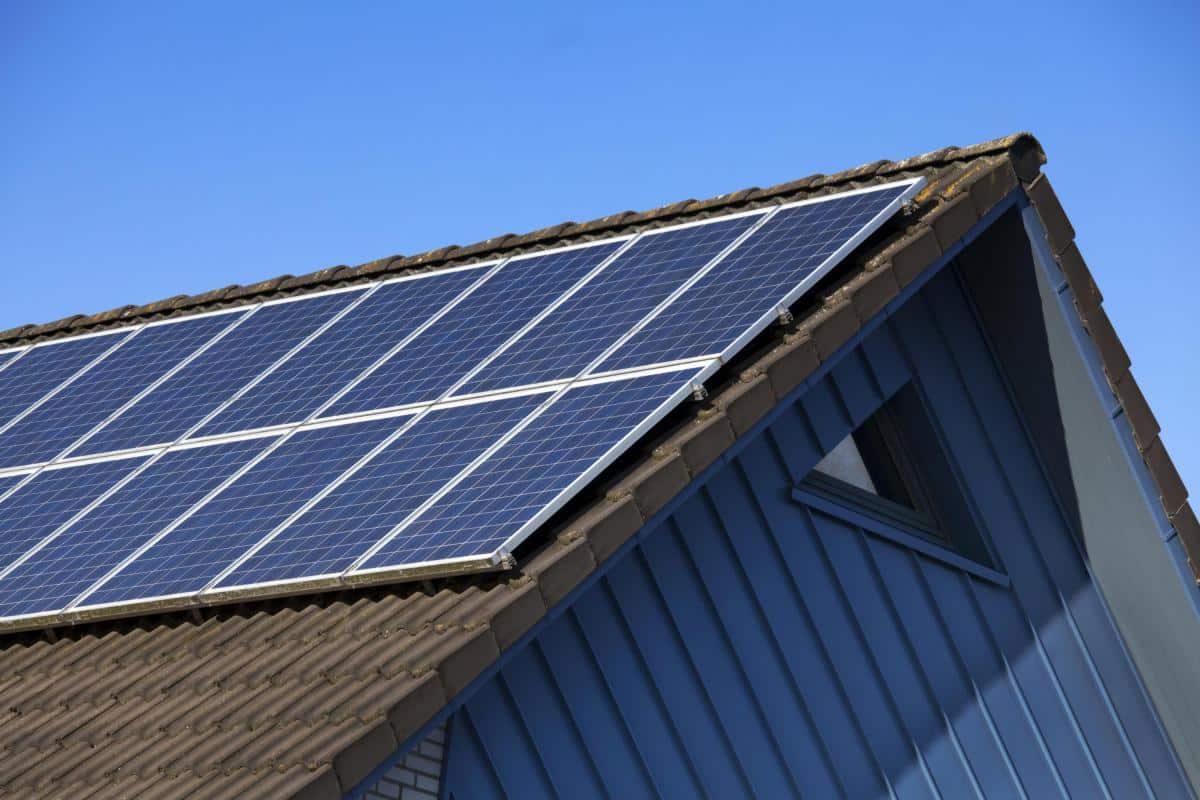Expert talk: demolition or renovation? Quantifiying the challenge of housing renovations
The European objectives to achieve a highly energy efficient and decarbonised building stock by 2050 poses a substantial challenge.
What are the exact numbers and opportunities of this challenge? Maarten De Groote, expert Built Environment and Smart Cities at EnergyVille/VITO explains.
The European objectives to achieve a highly energy efficient and decarbonised building stock by 2050[1] as part of the plan to reduce the greenhouse gas emissions in Europe with 80-95% with respect to 1990, poses a substantial challenge.
The situation in Flanders (as in most if not all of Europe) is far from evident, given that 95% of the Flemish houses don’t meet the 2050 objectives. According to data of the Flemish Energy Agency[2] hardly 5% of the single family houses achieves an energy performance level A, meeting the objectives set for buildings by 2050[3], this in strong contrast with more than half of the current building stock being highly energy inefficient (label E and F).
In the past years, the energy performance of buildings has been often put in the spotlights. In Flanders this paid off, especially for new constructions. The EPB-regulations in Flanders, with stepwise tightened requirements combined with an efficient compliance and control framework, enabled nearly zero energy buildings (nZEB) as a standard. 60% already met the nZEB objective, the legal requirement for 2021. Considering that the number of nZEBS in 2010 was hardly 4%, we can definitely speak of a great uptake and change in mindset, proving the effectivity of the implemented policy.

Stimulating the energy renovation market is therefore the main challenge. Due to technical, administrative and cultural reasons, it is hardly feasible to meet the same energy performance as a sustainably designed new construction project. Opting for demolition, followed by a newly-built home therefore seems tempting. However, a study of PHL, the Provincial College in Limburg (2009)[4], concluded that preferring demolition over renovation from an energy savings perspective is only the better option in a small number of cases. This due to cost, the limited amount of saved energy and the global environmental impact. Demolition and reconstruction is only the better option when needed in case of urban regeneration or when the overall quality of a building is too poor. The study made an estimation in 2009 that, depending on the source of assessment criteria, approximately 36,000 to 230,000 buildings are of such poor quality (e.g. instability problems, ascending humidity, and inadequate living quality) that a combination of demolition and reconstruction seems the better option. In the light of the 2,257,019 residential buildings in Flanders counted by Statbel[5] in 2018, this represents only 1.5 – 10% of the current building stock.
To make the Flemish building stock energy neutral, both the rate and depth of energy renovations needs to be increased drastically. To increase the renovation rate from 0.8% to 3% per year, both the capacity of the construction sector as the investment – with an estimated cost of approximately 40,000 to 150,000 euro[6] per in-depth energy renovation – are crucial challenges to tackle.
Cost reductions and innovative finance models are a priority to cover the investments needed. A collective approach[7], efficiency gains, digitalisation and innovation from the construction sector can strongly reduce the price of renovation while at the same time improving the quality. A quality- and energy saving guarantee improves the trust of both home owners and financial institutions to invest in renovation.

To enable the decarbonisation, collective strategies are starting to be considered as an additional step or even as an alternative to deep energy renovations. Large-scale research projects such as EPOC[8] and ROLECS[9] investigate to what extent a system approach can lead to context dependent guidelines for renovations. Buildings are no longer seen as standalone energy consuming units, but are part of an energy system. Solutions are identified based on the potential and specific situation of the specific location. For example, in regions where sustainable heat, such as geothermal or excess heat is available, heating networks could be a cost-efficient solution. Once a building is connected to the heating network, the investment of more expensive measures can be allocated over time while the building is already being heated in a sustainable way.
Besides the energy and CO2 savings, Flanders could reap many other benefits picking up the challenfe:
- Single family houses with an energy performance label B are sold for a price on average 10.9% higher and 25% sooner than buildings with label E. [10] Creating a higher value for a building is therefore a viable alternative to an unprofitable savings account.
- Renovated buildings increase the comfort and health of building users. Additionally, multiple studies demonstrate advantages for non-residential buildings, such as a higher productivity in buildings and offices, better learning performance in school buildings and faster healing of patients in hospitals. [11]
- The building sector is a strong and local value chain with tons of opportunities for innovation and further growth.
Conclusion: making the Flemish building stock climate neutral by 2050 is an ambitious objective, though highly needed and possible. It can primarily be met by deep energy renovation and a good coordination of opportunities offered by a collective approach and innovative financing models. Demolition and reconstruction, whether or not combined with core consolidation at sustainable locations, will only be the better option for a limited number of buildings.
References
[1] Europese richtlijn 2018/844 betreffende de energieprestatie van gebouwen en energie-efficiëntie – https://eur-lex.europa.eu/legal-content/NL/TXT/PDF/?uri=CELEX:32018L0844&from=EN
[2] https://www.energiesparen.be/sites/default/files/atoms/files/EvaluatieEPB-EPC2018.pdf
[3] https://www.energiesparen.be/energiedoelstellingen-tegen-2050
[4] Actieplan voor de bevordering van de vernieuwing van het deel van het Vlaamse woningbestand dat niet meer in aanmerking komt voor een zinvolle energierenovatie, Provinciale Hogeschool Limburg (nu Hogeschool PXL), 2009 – https://www.energiesparen.be/sites/default/files/atoms/files/erp2020_sloopennieuwbouw.pdf
[5] https://bestat.statbel.fgov.be/bestat/crosstable.xhtml?view=467b87b9-c0ab-4508-9f3d-5e0b92848264
[6] Expert berekening gebaseerd op basis van eenheidsprijzen voor typische maatregelen aangewezen voor de uitvoering van een doorgedreven energetische renovatie. Voor typische eengezinswoningen varieert deze investeringskost van 40.000 tot 150.000 € afhankelijk van de grote en de toestand van de bestaande woning.
[7] Bij een collectieve renovatie worden meerdere woningen gezamenlijk gerenoveerd waarbij een facilitator het traject begeleidt en zo de bewoners ontzorgt. Het schaalvoordeel leidt tot efficiëntiewinsten bij de betrokken bouwprofessionelen en tot een lagere kostprijs.
[8] https://www.energyville.be/en/news-events/epoc-2030-2050-project-belgian-research-institutes-join-forces-develop-models
[9] https://flux50.com/news-events/news/the-verdict-of-the-first-flux50-call-for-icon-and-pilot-scale-projects
[10] Het effect van het EPC en energetische kenmerken op de verkoopprijs van woningen in Vlaanderen, KU Leuven, 2019
[11] http://bpie.eu/publication/building-4-people-valorising-the-benefits-of-energy-renovation-investments-in-schools-offices-and-hospitals/

